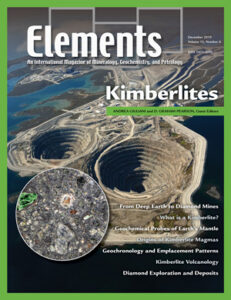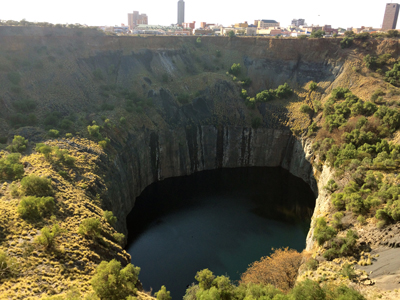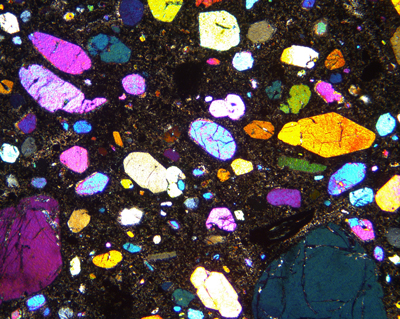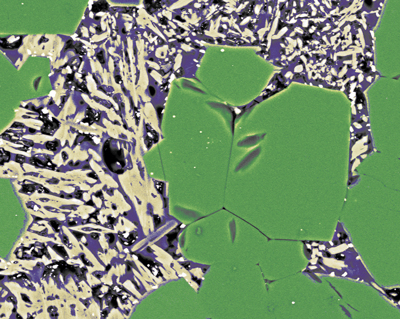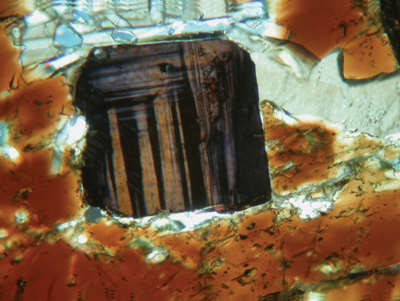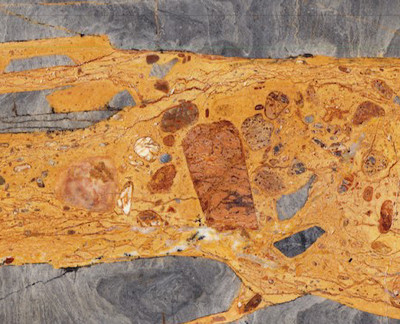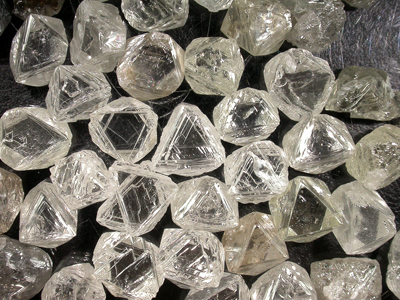Kimberlites
Andrea Giuliani and D. Graham Pearson – Guest Editors
Table of Contents
Kimberlites are the most deeply derived of all volcanic rocks, as well as the host rock for most of the world’s diamond mines. Kimberlites, therefore, provide unique snap-shots of magma genesis and mantle evolution in the deep Earth well into the diamond stability field (>150 km and, potentially, >700 km). Despite over 100 years of study, the origin of this complex rock-type remains the subject of intense debate. This thematic issue will summarize current knowledge and controversies on kimberlite formation, including key aspects of the petrology, geochemistry and volcanology of these unique rocks. It will show how kimberlites can be successfully dated, and explore links between the temporal and spatial distribution of kimberlites and known geological events. Diamond exploration and resource evaluation methods will be reviewed to demonstrate the inextricable link between an accurate understanding of the characteristics of kimberlites, their entrained mantle cargo, and diamonds.
- Kimberlites: From Deep Earth to Diamond Mines
- What is a Kimberlite? Petrology and Mineralogy of Hypabyssal Kimberlites
- Kimberlites as Geochemical Probes of Earth’s Mantle
- Kimberlites from Source to Surface: Insights from Experiments
- Dating Kimberlites: Methods and Emplacement Patterns Through Time
- Kimberlite Volcanology: Transport, Ascent, and Eruptions
- Diamond Exploration and Resource Evaluations of Kimberlites
12th International Kimberlite Conference
CAMECA
Crystal Maker
Excalibur Mineral Corporation
Gemological Institute of America
Ionplus AG
International Centre for Diffraction Data
ProtoXRD
Savillex
Scott-Smith Petrology Inc.
Smart Elements
Volume 16, Number 1 (February) • Abiotic Hydrogen and Hydrocarbons in Planetary Lithospheres
GUEST EDITORS: Laurent Truche (Université Grenoble Alpes, ISTerre, France), Thomas M. McCollom (University of Colorado, Boulder, USA), and Isabelle Martinez (Institut de Physique du Globe de Paris, France)
Molecular hydrogen (H2), methane, and hydrocarbons with an apparent abiotic origin have been observed in a variety of geologic settings, including serpentinized ultramafic rocks, submarine hydrothermal vents, and deep fractures within ancient cratons. Recent discoveries have also reported the presence of hydrogen in the vapor plume emanating from the icy crust of Saturn’s moon Enceladus, and methane has been detected in the atmosphere of Mars. Owing in large part to the utilization of hydrogen and methane by chemosynthetic biological communities on Earth (and maybe other planetary bodies), geologic production of these compounds has become the subject of intense scientific study in recent years. In addition, geologically produced hydrogen and methane are of interest as possible energy resources. Contributions in this issue will highlight recent developments in the understanding of geologic sources of hydrogen and methane, the biological utilization of these compounds, and the potential for human exploitation of these resources.
- Hydrogen and Abiotic Hydrocarbons: Molecules that Change the World Laurent Truche (Université Grenoble Alpes, ISTerre, France), Thomas M. McCollom (University of Colorado, USA), and Isabelle Martinez (Institut de Physique du Globe de Paris, France)
- Abiotic Sources of Molecular Hydrogen on Earth Frieder Klein (Woods Hole Oceanographic Institution, USA), Jesse D. Tarnas (Brown University, USA), and Wolfgang Bach (University of Bremen, Germany)
- Behavior of Hydrogen in Aqueous Fluids Under High Temperature and Pressure Elena Bazarkina (Néel Institut, CNRS, France), I-Ming Chou (Institute of Deep-Sea Science and Engineering, China), Alexander F. Goncharov (Carnegie Institution of Washington, USA), and Nikolay N. Akinfiev (Moscow State Geological Prospecting University, Russia)
- Abiotic Synthesis of Methane and Organic Compounds in Earth’s Lithosphere Eoghan P. Reeves (University of Bergen, Norway) and Jens Fiebig (Universität Frankfurt, Germany)
- Geologic Hydrogen and Methane as Fuel for Life Bénédicte Ménez (Institut de Physique du Globe de Paris, France)
- Hydrogen, Hydrocarbons, and Habitability Across the Solar System Christopher R. Glein (Southwest Research Institute, USA) and Mikhail Yu. Zolotov (Arizona State University, USA)
Perspective Article: New Perspectives in the Industrial Exploration of Native Hydrogen Eric C. Gaucher (Total S.A., France)
- Abiotic Hydrogen and Hydrocarbons in Planetary Lithospheres (February 2020)
- Raman Spectroscopy in the Earth and Planetary Sciences (April 2020)
- The Redox Engine of Earth (June 2020)
- Lithium: Less is More (August 2020)
- Noble Gas Thermochronology (October 2020)
- Hydrothermal Fluids (December 2020)



